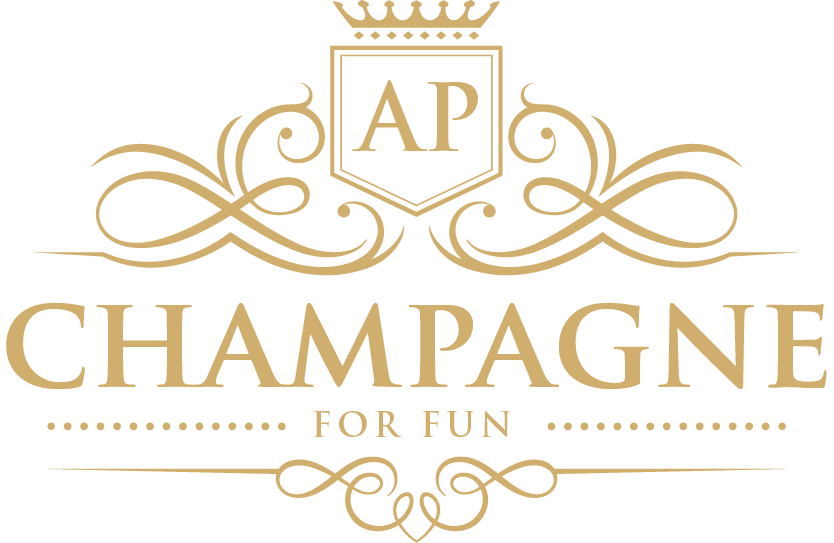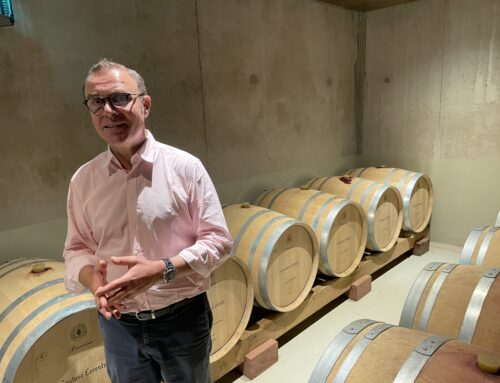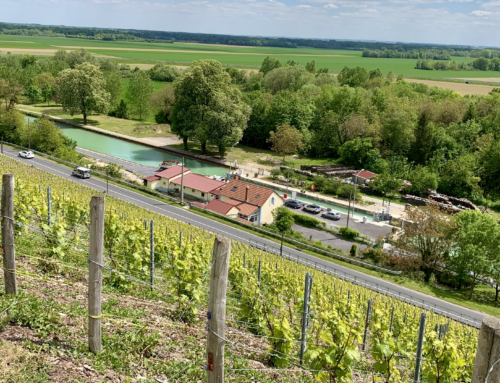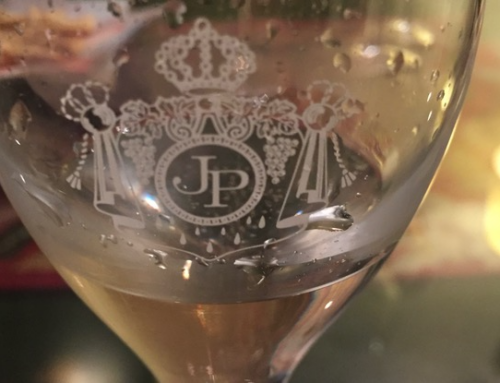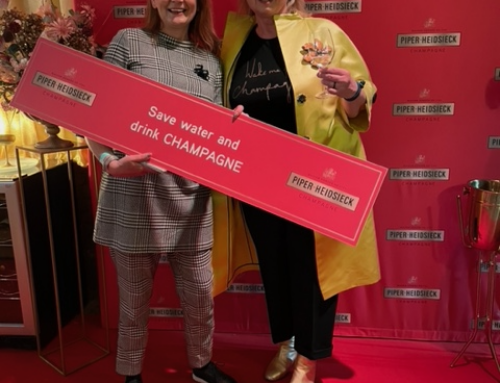Is Austria a wine country? Od course, Austria ia a fascinating wine country
Austria is one of the richest countries in the world based on GDP and one of the highest standards of life. When you think of Austrian wines, the first to remember are Kamptal, Krempstal and Wachau. Austria is a kind of small hero, there are only 46,000 hectares to grow the grapes. Yet Austrian wines are known and loved in the world. Apparently, the Austrian Wine Marketing Board has played a role here from 1986. One of my favorites, the Winery Loimer, is located in Langenlois, in the capital of Kamptal. As Fred Loimer, owner of the Loimer Winery, says: „ Authentic wines are always distinguished by their roots. They tell a story.”
I share pleasant emotions about meeting Fred Loimer and his sparkling wines in Flamm. I reminded myself of what I learned from the Estonian Sommelier Private School ( I try not to quote textbooks, you better go to school for sommeliers yourself) and read two interesting books Kalev Keskküla „ Uus veinijuht” (New Wine Book) and Rein Kasela „Veinireisid“ (Wine Trips). Of course I googled my fingers into the blister. And I have very extensive notes of two visits to the Loimer Winery and evening in Flamm.
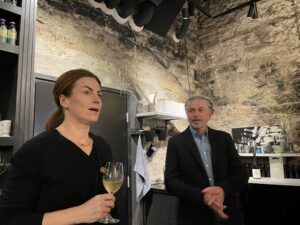
It’s serious work – getting to know creations of winery.
I remember how someone at school said there are 16 DAC areas in Austria, on which the lecturer asked: what is this DAC? He didn’t get the answer. The DAC is Distritus Austriae Controlatus. The DAC notes quality wines by region. Yes, we know more about the French-like AOC system Appellation d’Origine Contrôlée, which marks the quality wine region, or the importance of terror and geographical origin. The DAC system distinguishes between Classical and Reserve quality wines. In addition, the basic Predikät system of grape maturity or sugar level in cuve is In addition, the basic Predikät system of grape maturity or sugar level in cuve is used in Austria as in Germany.
Thus, Kamptal DAC wines are typical quality wines for the Kamptal region. Quality wines have a red-white-red banderole on the cap, which confirms that it is fair and controlled with quality wine. If only one gtape is allowed in the area, only the DAC is marked on the label and a good wine friend must be able to define the grape himself.
As a fun fact, be it added that, in Austria, according to the French example, DAC and the Germans are generally used in the Prädikat system, Wachau has decided to use his classification: Steinfeder, Federspiel, Emerald. The recognition – Austrian classification is quite complicated.
The wineyards of the Loimer winery are located in Langenlois, Kamptal, where the climate is very suitable for making sparkling wines. The cool air floating from the bottom at night gives the grapes the acidity and spice that is particularly known in the aroma. One of the reasons why Loimer’s sparkling wines are at the top of my preferences, is special minerality.
The Kamptal DAC is allowed Grüner Veltliner and Riesling. Chardonnay, Pinot Blanc and Pinot Gris and Muskateller are also grown. The other plots of the Loimer winery are located in Thermenregion Gumpoldskirchen ( authorized grapes Zierfandler and Rotgigfler and Burgundy, like Chardonnay and Pinot Noir). Chardonnay is still named Chardonnay, but moving towards the Slovenian border, we need to know that in Styria, Chardonnay is named Morillon. As a student at the Sommelier School, I always broke my head, why the same grape has to have different names and worse, why is the same name on different grapes. And to turn student’s world picture into a earthquake, there in Tuscany near Siena, for example, is a place called Montepulciano, but in Abruzzo wine is made of grapes Montepulciano. The name of the grape is Montepulciano, not the grape has not been transported from Montepulciano to Abruzzo. The city of Montepulciano is one of my favorites in Tuscany, that is it. And the top wine here is Vino Nobile de Montepulciano, fermented from the Sangiovese grape. Unfortunately, life is not so easy that there is white wine and red wine and wine with bubbles. So, calling Chardonnay Morillon in Austria is not yet the most difficult name trick. But back to Loimer.
I’ve been in the Loimer Winery 2 times and my favorite sparkling have become even more favorite with that time. I’m going to be there when something exiting happens. Flamm took off at his birthday celebrations with Loimer’s wine night at the Rotermann Quarter in Tallinn. Fred Loimer was also present.
What is PetNat?
In Flamm, we start the evening with Pet Nat 2020 sparkling. I’m not a fan of Pet Nati, old-fashioned I am glad more with champagne. PetNat is very far from champagne. Historically too. Namely, the first French sparkling wines were also made by this method. PetNat or Pétillant Naturell means a natural bubble. Unlike modern champagne, there is no second bottle fermentation or added yeast or sugar. Fermentation is stopped, the wine is bottled and the natural bubble occurs in a bottle without the addition of yeast, under the influence of natural yeast.
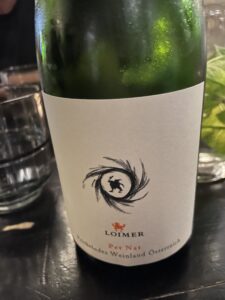
Loimeri PetNat on meeldiv üllatus
In the case of the Loimer winery PetNat, elegant procedures, great respect for terroir and biodynamics are important. Loimer PetNat is a completely biodynamic wine with natural bubbles. This is one of the very few great PetNats for my taste. The Loimer PetNat 2020 is perfect, the taste nuances are surprising due to the bubble and the wine is authentic, not over-manipulated. It would be more right to say that Loimer PetNat is biodynamically made by the principles of the Loimer Winery. Wine is made by terror, not human manipulation by nature. PetNat Loimer 2020 is not a Kamptal DAC wine, because, as we know, only Grüner Velitlner and Riesling, are allowed in Kamptal DAC, but the Muskateller and Veltliner berries have fermented into drinks also in Lomer’s PetNat 2020. The qualification then is Österreichischer Scaumwein. In glass I have a slightly cloudy wine. As the pressure in the PetNat bottle is lower than in a bottle of champagne, PetNat bottles are often closed with a crown cap (similar to a beer cap ). This, of course, leaves a lovely wine friend without a typical festive sound you can enjoy when opening a bottle of champagne.
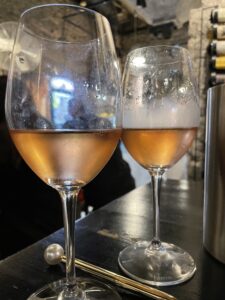
Loimer Rosé
I have written in my degustation diary: citrus in the aroma, lemon cream, white flowers, meliss. Taste of minerality, mint and spice. The aroma and taste together give emotion as if I had woken up in the high mountains in the perfect morning. I know how wine should be described. CO2 is in the wine, the wine is cloudy, the aroma is clean… One long and accurate academic description would be correct. But my notes are not correct and academical, I am hunting emotions and Loimer PetNat 2020 is an emotional enjoyment. In my opinion, this sparkling wine from all the already tasting PetNats is one of the three most elegant and enjoyable PetNat. It’s a positive surprise. It’s already stocked in my wine cellar.
PetNat is trendy today. Germany and Austria make very good sparkling wines. Of course, the guarantor of the taste experience is a traditional method of production. As Langenlois’ climate is cool, there is also a high expectation of Loimer’s sparkling wine. In fact, the homepage of the Loimer Winery also raises the expectation, where the principles of winemaking described receive only one comment from me: perfect!!!
Loimer sect Langenlois Blanc de Blancs Brut Nature
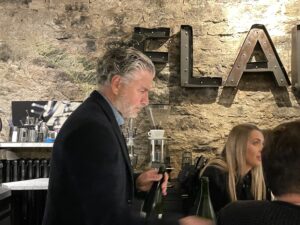
Next, we will taste the Loimer sect Langenlois Blanc de Blancs Brut Nature Österreich Grosse Reserve. In the case of sparkling wines, Blanc de Blancs means that the wine is white wine from white grapes. Wine is fermented only from white grapes. There are currently 76% Chardonnay in the bottle, 19 % Pinot Blanc and 4% Pinot Gris. Chardonnay is a white grape from Burgundy, which today grows very much everywhere in wine countries. Chardonnay’s cultivation is called a cross of passage in Wikipedia, or a rise above a lower layer, a parquet certificate. Today, Chardonnay is the queen of the champagne world, but in young sparkling wines, this queen can be too rigid and straightforward, with too sour faces.
Pinot Gris has also a tricky name and can be called the Ruländer in Austria. And sometimes Grauburgunder.
Pinot Blanc is often Pinot Vrai in Champagnes instead. In Austria, however, Weissburgunder or Klevner. At the same time Pinot Noir grapes are namad as Klevner, in Switzerland. And in the village of Radošina in Slovakia, the wine is Radošinski Klevner, fermented from Pinot Gris and Pinot Blanc and has come out so well that it was also served at the lost wedding of Elizabeth II.
Loimer Blanc de Blancs has been in steel tank for 7 months and on the fine sediment for 4 months during the first fermentation. I am surprised by the pleasant intensity of the bubbles. It’s a fine bubble party, right. Based on this bottle, it may be decided that a very fine and festive bubble has been caught in the bottle in the Loimer wine cellars. I am fascinated by the aroma and taste of a cookie in sparkling wines, it is easier to find in old champagne. Here I smell pleasant butter cookie and briosche. The same in the tasting note. The Loimer grand reserve has all the aroma of good champagne and a taste of it. The reason is that the sect has matured on the sediment for 4 years. This is called on lees or sur lie. If yeast has eaten all sugar from cuve, dead yeast cells will fall to the bottom to form sediment. The sediments are divided into two. If wine is on the primary sediment ( yeast cells, grape seeds, shells) too long, wine can get a little rude. The second set is called fine lees. Secondary fermentation is 44 months, and great taste experience has been achieved.
Alongside with lemon and cinnamon aroma, there is a nice apple. Just as if the bearer had baked cinnamon pie before picking an apple and forgot to wash his hands. However, the mature taste of the apple is not so strong that I want to say: oven apple. Although for a moment, the taste resembles a yogurt with apple jam. Obviously, it is a matter of malolactic fermentation. Malolactic fermentation is a process of fermentation of wine that the winemaker seeks to control to allow this wine into malolactic fermentation, which is wanted and prevented from malolactic fermentation in these wines, to which it is not recommended to give soft yogurt nuance. Although „fermentation“ generally indicates fermentation, malolactic fermentation is not true of the fermentation process. Here, acidic apple acid becomes a softer milk acid, which gives the wine a softer, I think a rounder taste nuance.
In the taste of the Loimer Blanc de Blancs sect, the balance of acid and fruitiness is very good. From dry sparkling wine, you are expecting first and foremost for pleasant acidity. If Chradonnay may be too straight in a young sparkling wine, here sect has undergone both malolactic fermentation and long-term development in the yeast note. Sugar has not been added and the result is very pleasant. In the aftertaste, briosch and apple become a dominant experience abowe fresh citrus.
The bottle also has a discogement time mentioned on label. Disgorgement is then a process that takes place after dancing bottles (riddling), where the whole sediment has sunk into the neck of the bottle. The neck of the bottle is frozen, the sediment is removed. The bottle is filled with a mixture of wine and sugar. Sugar is added only if the sweetness of sparkling wine is to be adjusted. As we already enjoyed the taste, the Loimer Blancs de Blancs is heavenly good without adding sugar. Zero dosage .
Although we may have an idea that very old wine is oh how subtle, with both champagne and sparkling wine, the best time is important for consumption. If we keep the choice in the wine cellar of each sparkling wine for decades, we will most likely have an unpleasant corpse warehouse later in the basement. I have attended a very festive event serving non-vintage champagne, which was forty years old and it was felt that this champagne had died for at least twenty years.
Loimer recommends keeping his Blanc de Blancs peacefully in a bottle after disgorgement from years to three and only then to open the bottle.
How can I describe aroma is in this sect? I’m not sure if the smell of a asparagus comes from Flamm’s kitchen or my glass, but a pleasant fresh asparagus aroma attracts a smelly. Suitable for Flamm goat cheese and asparagus flammenkuchen.
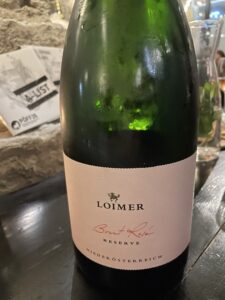
Loimer BrutRosé Niederösterreich Reserve
Lomer Brut Rosé
Our degustation trip continues with Lomer Brut Rosé. Here I must honestly admit that it is a long-time love for me. Partly, that’s why I went to Flamm, just to thank Fred Lheimer. Of course I told him that when I first went to the Loimer winery , I felt in love, and when I went to the Loimer winery for the second time nothing changed. And I did not made a secret of this love. I appreciate very much the Lomer rosé sect. Rosé then means pink sparkling wine, in which the pink color is obtained from dark skin grapes, either by mixing red wine with white cuvee or by a method of bleeding (saigne), where during the maturation is allowed to have a slightly red grape skin contact.
Rosé is served from a magnum bottle. Magnum is then a 1.5 liter bottle and the standard bottle is 750 ml. The Loimer rosé sect bubble is a little different from the previous ones, bubbles dance in the glass enforgetably and lasting, being subtle and playful rather than big and powerful. Very beautiful and beautifully moving spinning bubble. Rosé sparkling wines are above all sparkling wines on my preferences page. Not my friends call me Madam Rosé in vain. I say directly and honestly that if there is no bubble in wine, it is a wasting of grapes. And if that sparkling wine is pink, it’s even better. If this pink is still champagne, it is at all the top. In my notes, the Loimer rosé is closest to rosé champagne. This point could be made, because 12 points out of 12 have been given by me during degustation. But in fact, in the glass is a wonderful drink that deserves a little more attention. Harvested in 2016, discorged April 2021. On the e-shop of the Loimer Winery one can find the 2019 harvest and not in a magnum bottle. We all in Flamm understand how rare the opportunity it is, enjoy the rosé we have in the glass right now. The dosage of this sect is 2 grams per liter. This is one step towards perfection in the case of rosé, dry sparkling wine. The color itself gives the sweetness to the eye here, there is no need to put the cup of strawberry jam into this cuve. The Loimer’s website provides Rosé with a definition of sugar content in trocken. For Trocken, the maximum allowable residual sugar is 4 grams per liter. https://www.austrianwine.com/our-wine/wine-law/residual-sugar-content . So it’s a pleasantly dry pink sect. In the aroma I feel a lingonberry pie. The taste also feels pleasantly in the taste I feel a little plum, dark chocolate, coffee and a pleasant minerality to the aftertaste. Chocolate and coffee are completely special to Loimer’s dry rosé. Betterly, they come out in a sect that has matured in a magnum bottle. The sect is fermented from Zweig, Pinot Noir and St Laurent grapes.
Now is the time to talk about Austrian red grapes. St. Laurent is a red grape variety from France, probably a lesser-known relative of Pinot Noir. Dark berries, coffee and chocolate tasted. In Hungary, St Laurent is named Szentlörnic.
The Austria’s best-known red grape breeder is Fritz Zweige, who also gave the grape his name – Zweigelt. In the breeding of Zwegelt grape, St Laurent and Blaufränkisch were crossed. Blaufränkisch called a joke. The name arose during the time of King Karl Great (Charlemagne) of Francs. Everything that was big and good was named franc or fränkisch. Poor stuff was named hunsch. Ironically, one of the ancestors of Blaufränkisch is Gouais Blanc or Heunisch. Another explanation for Frankisch and Heunisch’s meaning is that Heunisch means large and large berries, larger yields, poorer wine in old Lower German.
In Hungary, the name of the grape is Kékfrankos.
Back from the berries to the sect that bubbles in the trophy. Loimer Brut Rosé Reserva is all I expect from extra-class sparkling wine.

Peeter Tikk from Vinorama
This my story about Loimer and Flamm for today. Both are nice and excellent. Flamm has a good wine selection. Big surprise was completely unexpected paring flammkuchen or Flamme Küche with a sect. It is worth going to make fun of another time, there is a very good combination. I certainly wouldn’t have paired the sect and flammkuchen in the sommelier private school exam, but life is even more colorful and full of pleasant twisting of rules.
Loimer is still my favorite sect maker in Austria and Loimer rosé is my undisguised favorite sect. Although suddenly PetNat spared himself to the front of his favorites.
I will talk about visiting the Loimer wine house another time. Of course, it is now a bit upside down, my story. I talk about wine before and then will tell about the winery, because the Loimer Winery is a separate attraction and Fred Loimer’s attitude that respects terroir and vines is captivating. But so it’s that I’m talking about the Loimer’s sects first. By the way, the Loimer wine house produces much more than a sect. But there are other experts talking about still wines. We have Champagne for fun and Sparkling bubble.
Sparkling: Loimer PetNat 2020, Loimer sect Langenlois Blanc de Blancs Brut Nature, Lomer Brut Rosé
Manufacturer: Weingut Loimer
Region: Austria, Kamptal
